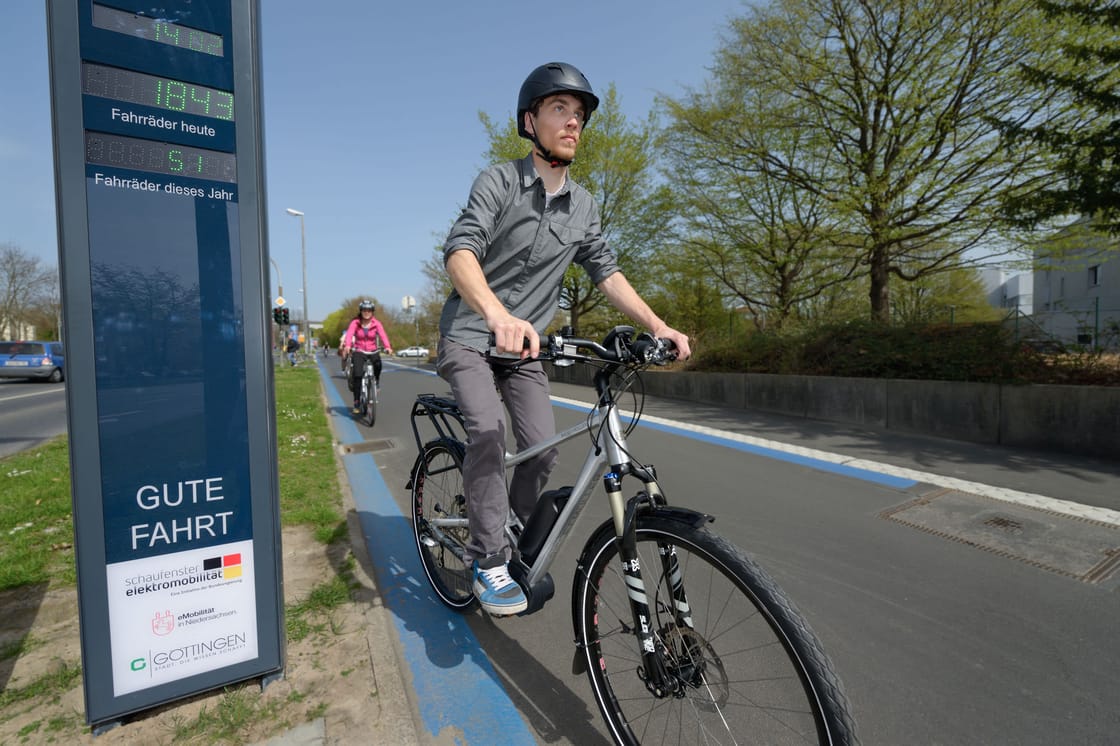Cycle lanes – an opportunity for Germany
“Will Münster soon be everywhere?” This was the question posed by WELT authors Jens Hartmann and Christian Mutter in 2011 – and they meant what was expressed in the article headline at the time: “Germany is becoming a nation of cyclists“. Münster, as a designated bicycle-friendly student city, is considered a role model for local bicycle routes – in the North Rhine-Westphalian city, more trips are made by bicycle (38%) than by car (36%). In the text published online, the authors clarified that citizens in Germany are increasingly switching to two-wheeled vehicles and the reasons for this.
Healthy trend
The situation has not changed significantly since the article was published in 2011, and the trend has even intensified. Continued growth in awareness of the environment and one’s own health, experiencing nature, avoiding morning traffic jams, and the undisputed benefits in the wallet – these are all reasons why more and more Germans prefer bicycles to cars or even public transportation. And not just for weekend excursions or sports activities, but above all in commuter and educational traffic. Bike commuting from home to work is booming, commensurate with the ever-increasing sales of e-bikes and pedelecs (pedal electric cycles), which allow even those who don’t yet have cycling calves to ride smoothly and quickly. What’s more, even after a 12-kilometer journey to the office, pedelecs don’t necessarily make you sweaty when you get off the saddle.
Demand for cycle paths increases
It is this development and its accompanying effects that are placing changed demands on the quality of infrastructural services in Germany. Or, to put it another way: if more cyclists are on the road and they also ride faster due to technical innovations, the need for suitable routes increases. Demographic and urban development in Germany plays a special role here. More and more people no longer live where they work, preferring a cottage in a fancy suburb to commuting to work every day. The distances to the workplace are becoming longer in the course of this development called suburbanization. On average, Germans travel around 10 kilometers by car. A distance that can also be covered very well by bike or e-bike.
Create connection network for cyclists
The solution to combine the above-mentioned requirements and the growing trend to switch to two-wheeled vehicles is cycle lanes. The German Cyclists’ Club (ADFC) defines cycling expressways as “cycling connections that link residential and commercial areas or city centers directly and with high quality.” Following the example of other European countries, such as the Netherlands, more and more cycle fast lanes should also shape the urban landscape or the landscape between cities and important centers in Germany in the future. “Cycle expressways are lighthouse projects. They stand for modern cycling,” says Wilhelm Hörmann, ADFC traffic officer. In Munich, for example, the potential for four such high-speed routes within a radius of 20 kilometers around the city is currently being examined. With the very recent result that the need for these connections is as great as the advantages they bring: “As a long-term vision, the realization of cycle fast connections in (…) the Munich region is desirable.” And based on nationwide developments, the Bavarian capital will not remain the only region with such barrier-free, direct and comfortable routes for cyclists or e-bike users in the coming years.
Related links:
